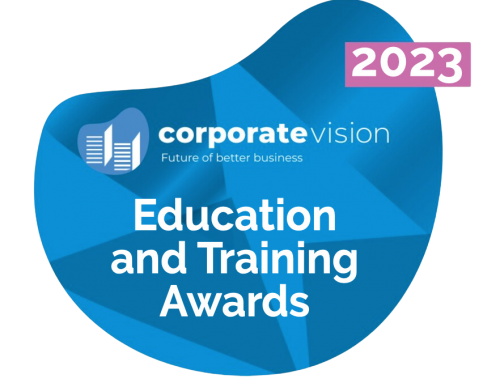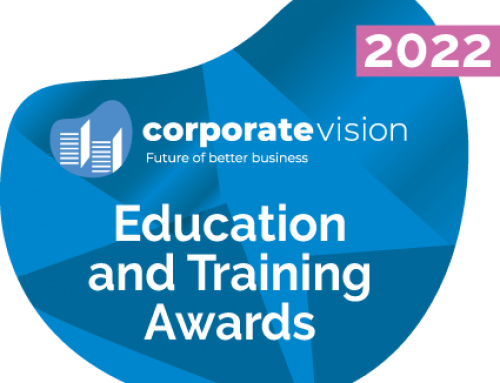This blog is part of a series of blogs exploring Emotional Intelligence. Looking at ways to be able to develop and enhance our own perceived levels of Emotional Intelligence.
What is Emotional Intelligence?
To gain a greater understanding you can read a previous blog What is Emotional Intelligence and How Can I develop it, for more detail. However, Emotional intelligence is all about how well you understand your own emotions and the emotions of others, and the ability to identify and manage them. Emotional Intelligence, also known as “Ei” or “EQ”, is now well established set of “Competencies” that contribute to performance, engagement and success.
Their are five key areas of Emotional Intelligence, Self Perception, Self Expression, Interpersonal, Decision Making and Stress Management. Each of these areas has three traits. We are going to discuss each of these traits in more detail with their own blog. We have previous looked at the area of Self Perception and now looking at Self Expression. This week we will be exploring the trait, Problem Solving.
What is Problem Solving and the relations to Emotional Intelligence?
Problem solving is the ability to identify and define problems as well as to generate an implement potentially effective solutions. In short, it involves effectively solving problems of the personal and interpersonal nature. Problem solving includes the ability to understand how emotions affect decision making. This trait is much more about your ability to solve a problem and not let it affect you and the people around you. To work through the problem in a calm and undressed manner. This may even be while the world around you is going crazy.
“We can not solve our problems with the same level of thinking that created them” – Albert Einstein
How much do you use the trait of Problem Solving?
Does it take a lot of emotional effort to solve a problem?
When Problem Solving is operating well:
- Takes in enough information to make informed conclusions, but not so many details that you are overwhelmed
- Keeps a clear head on the pertinent issues, without becoming frustrated
- Generates motivation for others to act in a way that will achieve goals
- Likely to take action
When Problem Solving is low:
- May prefer others to make decisions for you
- May struggle to keep a clear focus on the situation at hand
- Much of their time and energy is spent worrying about decisions rather than trying to solve them
- Prefers to deal with impractical problems rather than people
Developing skills around Problem Solving
During Learning Cog’s Emotional Intelligence (EQ) Masterclass, starting with ‘Self-Perception’, we explain how to assess you own emotional intelligence and how to develop your EQ awareness. Here in this blog we have added some areas to think about when developing Problem Solving.
Observation
- Who do you know who is good in their problem solving?
- What do they actually do to solve problems (list the steps)?
- How do they go about finding out information about the problem, in order to get a complete picture?
- When trying to solve the problem, how much time are they talking and how much time do they allow others to talk?
Self Coaching
- What is your preferred approach to problem-solving?
e.g. Avoid the problem, we looked at the last minute and grab the first answer that comes to mind, take a systematic approach - How do you respond when I have a problem?
- When you deal with problems, either well or badly, what do people say about what you did?
- Last time you handled a problem well, how did you feel, and what did you do that was key to successful outcome?
Thinking and Reflection
Here is an exercise for you to complete to help build your understanding of your own Problem Solving.
Exercise – Structured Problem Solving
Try this step-by-step guide to problem solving
- Define the real problem: find out the real problem rather than the symptoms.
e.g. Complaints from employees are symptoms, the underlying cause(s) is the real problem. - Set objectives: what objective do you want to achieve and how will you measure their successful achievement?
Identify any constraints: Are any other parts of the organisation affected? Are there any time are financial are all the constraints? - Generates and prioritise options: how many different ideas have been generated? Prioritise them and select the ones you wish to develop further.
- Choose and evaluate option: think about the possible effects of a particular option our solution. Choose the option which matches your objectives.
- Implement: put your solution into action.
- Monitor and evaluate: monitor progress, make adjustments if necessary. Have your objectives being met? What worked well that you can use next time?
Doing
It is important to actual do something when taking part in any self development. The practical is more important than the theory.
- Distinguish between important and not so important problems, so you know how much time to spend on them.
- Try to define and clarify what exactly the problem is.
- Make an effort to understand how the problem developed, see the way it is affecting you and others and why.
- Identify all the stakeholders in a problem and what their interest/needs are.
- Practice differentiating important from not so important problems to develop the appropriate amount of energy to solving down.
- Generate solutions to problems before making a decision.
- Attempt to achieve a win/win solution, which meets the needs of all parties.
- Use problem-solving and analysis tools and processes e.g. Force field analysis, pros and cons, fish bone technique, etc
- When you have decided on the best way of dealing with the problem, go ahead and do it. It doesn’t work, try another possible solution.
- Bank and the good times.
- When you have done something really well take time to reflect on how well you did it and bank. To be able to use next time your are faced with a similar problem.
The more time you spend observing yourself and the people around you, the more you develop your Problem Solving. Give yourself time, it may feel mechanical, clumsy and awkward at first, but with practice it will become quick and easy and automatic. Why not get in touch and talk to us more about developing Emotional Intelligence in yourself, your Leadership Team or your whole business. info@learningcog.com
Look out for the next blog on Developing Emotional Intelligence – Part 11 – Reality Testing
Or read previous blogs:
What is emotional intelligence? and how can I develop it…
1 Developing Emotional Intelligence – Part 1 – Self Regard
2 Developing Emotional Intelligence – Part 2 – Self Actualisation
3 Developing Emotional Intelligence – Part 3 – Emotional Self Awareness
4 Developing Emotional Intelligence – Part 4 – Emotional Expression
5 Developing Emotional Intelligence – Part 5 – Assertiveness
6 Developing Emotional Intelligence – Part 6 – Independence
7 Developing Emotional Intelligence – Part 7 – Social Responsibility
8 Developing Emotional Intelligence – Part 8 – Empathy
9 Developing Emotional Intelligence – Part 9 – Interpersonal Relationships
Did you know we currently offer [Virtual] Emotional Intelligence testing and training?
Before the workshop you will be invited to take part in a pre-course activity which includes an online self-assessment producing a 20 page personal Emotional Intelligence Report.
An employee’s skills and qualifications are important for success within their role. An employee’s Emotional Intelligence is just as important, if not more so, for fulfilment within, or potentially beyond, their current role. The Emotional Intelligence in the Workplace workshop is designed to as part of an individual’s development in work settings. It helps individuals focus on the impact of emotional intelligence at work and offers suggestions for working more effectively in one’s role, with colleagues, managers and clients.
- Understand the impact of Emotional Intelligence on themselves and the people around them
- Quickly identify patterns in own and others Emotional Intelligence
- Create a clear, organised understanding of their strengths and weaknesses in a constructive way.
- Effectively measure where they currently are and wants to be by comparing results against sample groups of general population
- Make instant connections between different subscales of Emotional Intelligence and help leverage EI strengths and improve EI weaknesses.
- Create an action plan to develop key areas of Emotional Intelligence
- Become a more effect member of the team and organisation– This virtual session is 4 hours with a 1 hour break.
– All of our Virtual Learning workshops are conducted via Zoom.
– Virtual learning begins at 10.30am through to 12.30pm and then again from 1.30pm to 3.30pm.
– You will receive an electronic version of your Emotional Intelligence report, and workshop materials will be sent via post.
To discover more about Emotional Intelligence and how LearningCog can help you, head over to our dedicated Emotional Intelligence page.






